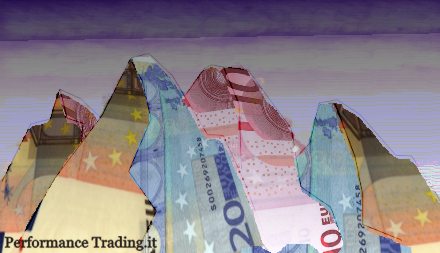
During a stock market peak the price of a given stock (i) jumps from an initial level p1(i) to a peak level p2(i) before falling back to a bottom level p3(i). The ratios A(i) = p2(i)/p1(i) and B(i) = p3(i)/p1(i) are referred to as the peak- and bottom-amplitude respectively. The paper shows that for a sample of stocks there is a linear relationship between A(i) and B(i) of the form: B = 0.4A+b. In words, this means that the higher the price of a stock climbs during a bull market the better it resists during the subsequent bear market. That rule, which we call the resilience pattern, also applies to other speculative markets. It provides a useful guiding line for Monte Carlo simulations.
By Dr B.M. Roehner
Summary: